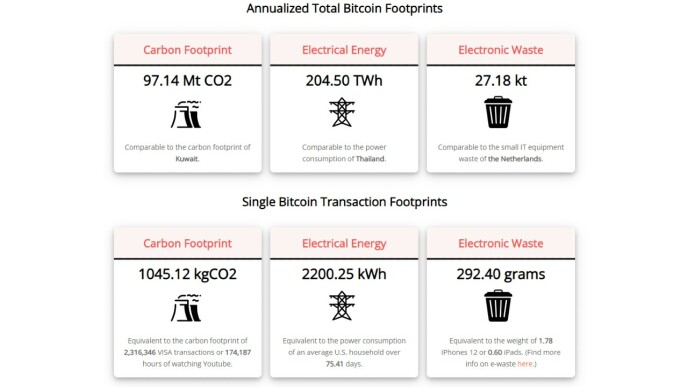As the world struggles with significant environmental changes due to industrial pollution, fossil fuels, and the primary reason for climate change, cryptocurrency has become in the discussion of climate change.
Bitcoin and many other cryptocurrencies are being produced by mining, and mining takes a lot of energy to create bitcoins or any other cryptocurrency.
There has been a race for becoming crypto millionaires, and everybody wants to win in this race, creating a good amount of electronic waste than fat bank accounts.
Here’s how you can know how much energy is being consumed that can cost significant changes in climate change.
How Much Energy is too much?
The apparent reason for the environmental impact of Crypto on climate change is how they are being generated, and they are being caused by electricity to what we call digital coins.
As we know that many types of cryptocurrencies, including Bitcoin, hardly rely upon mining, and after Bitcoin’s release, it has become harder to mint new units through the mining process.

So the total amount for bitcoin to mint is 21 million, and the more mint takes place, the more computational power needs to mint the left ones.
Bitcoin is the most expensive cryptocurrency (The price of one bitcoin is 42,000$, checked by this bitcoin calculator as of this writing). Since it tops the prices and other currencies, everyone wants to mine bitcoin to have some or a good portion in their pockets.
Therefore, it takes more computational power and electricity to mint new ones. The Cambridge Bitcoin Electricity Consumption Index states that bitcoin mining uses more electricity power globally than Netherlands and Pakistan.
The current miners with considerable income are Antminer S19j Pro, Antminer L7, Innosilicon A10 Pro, and others.
The environmental concerns come due to the production of carbon footprints by the power plants. A single bitcoin transaction takes 2,292.5 kilowatt-hours of Energy which is good enough to deliver electricity to a typical US household for over 78 days.
How come Environment concerns in Crypto?
Many countries use fossil fuels to generate electricity, resulting in carbon mixing in the atmosphere and worsening the climate.
Approximately 35% of bitcoin operations occur in the USA alone,
and the University of Cambridge has estimated that 60% of power is generated through fossil fuels.
There’s also an issue with the physical waste. As everybody is in the race to build more coins, miners use graphics cards, computers, and purpose-built ASIC rigs to mine bitcoin. They usually through away the old products and buy new ones.
Which produces physical waste, and therefore there has been a lot of electronic waste.
Why Crypto Uses So much Energy?

Digital currencies consume so much electricity that no group of people or network could control them. Therefore, they are called decentralized currencies, which means they have no single control point.
Popular cryptocurrencies such as Bitcoin and Ethereum are based on the proof of work (PoW) system. It relies on users having to solve problems of varying difficulty to create new coins and add new blocks of data to the blockchain of a cryptocurrency.
The idea behind this system was developed to protect against cyberattacks in which a person creates numerous fake identities and then uses them to control most of the network.
Conclusion
Despite the benefits of cryptocurrency, the environmental impact of cryptocurrency mining is still a controversial issue. In addition to the fact that the industry consumes a large amount of energy, it is not only an inefficient form of money.
The digital infrastructure of the currency industry is also energy-intensive. The mining computer needs massive amounts of Energy. Further, data processing on these computers requires large quantities of Energy. Therefore, it is not surprising that the environmental impact of cryptocurrency mining is so high.
The post Environmental Impact Of Cryptocurrency appeared first on ReadWrite.


Comentarios recientes